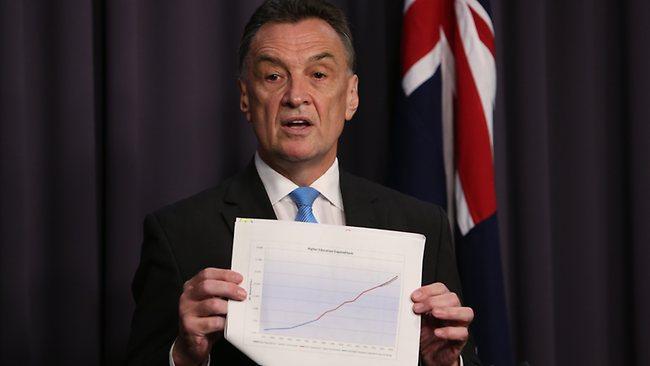Funding cuts a concern for all
THE voices criticising the federal decision have been loud and persistent: students, university staff and vice-chancellors.

ON Saturday afternoon, the federal government announced reductions in university funding and student support. By Monday, some declared the recent Universities Australia national campaign to promote investment in university education "in tatters".
And yet the voices criticising the federal decision have been loud and persistent: students, business and community leaders, university staff and vice-chancellors.
Many have cited evidence that universities make a major contribution despite levels of public funding being among the lowest in the OECD world -- data drawn directly from the Universities Australia advertisements of recent weeks.
That outcry will only grow, as members of parliament across the country consider the consequences of cuts to local campus.
Vice-chancellors are not doing their jobs if they fail to voice, loudly, their opposition to the funding changes for students and universities. Yet these protests are also a reflection of the changing nature of the university sector here.
A once elite pursuit has now increasingly become mainstream. If universities were ever seen as ivory towers, they now take pains to be inclusive. The record number of first-in-family students shows the shifting demographic.
In 1970 just 3 per cent of adult Australians held a university degree. That figure is now 37 per cent and tracking towards the federal government's goal of 40 per cent participation.
Which means many families, for the first time, have a direct interest in what happens on campus. There is a growing realisation of the benefits to the individual and the nation of a university education. Market research undertaken for Universities Australia shows that 88 per cent of people will encourage their child, or young people they know, to attend university.
This is a rational response to job opportunities and to the power of education to transform lives.
More than half the jobs created in the economy this year require a university degree. High-skilled jobs are growing 1.6 times faster than low-skilled ones.
Not only does higher education foster an inquiring mind but it also leads to higher incomes. Graduates on average earn twice the income of school leavers.
The sector's expansion has been actively fostered by the federal government. The demand-driven system has encouraged greater participation by young people in universities, whether they are rich or poor, working class or middle class, indigenous Australians or from non-English-speaking families. It is no wonder an electorate making these choices should be taken aback by the federal decision to cut funding.
People have accepted the message about education -- both school and university -- and so struggle to see the rationale for reducing funding in one sector to pay for increases in another. We need both, at the highest standard, for a viable future after the mining boom.
The Universities Australia campaign has evoked widespread community response because it speaks to this new reality. The community may hold only modest knowledge about higher education policy or funding models, but market research shows clearly parents grasp the benefits of a university education for their children.
In a crowded policy and political agenda, the UA campaign has competed with other issues and sectors in the run-up to the budget and the federal election.
Our pre-campaign research showed that university issues rank low on the list of concerns that voters spontaneously raised as important for government action. Despite this, the campaign drew strong levels of support with 87 per cent of voters endorsing the right of universities to state their case.
The campaign's first wave of advertising reached more than one third of the population.
The message was not sufficient to stay the government's hand, but the strong public response to tertiary cuts may give policymakers pause. A world in which few cared about universities is drawing to a close. Like schools, campus is becoming a shared experience -- and a shared concern -- for many.
The Universities Australia campaign will continue. The federal government's pre-budget reductions of $2.3 billion in university funding and student support programs give informing Australians a new urgency. We need a university sector that can provide opportunities for all. Australia should be top of the class when supporting its schools and its universities.
Glyn Davis is chairman of Universities Australia.
BEHIND THE REDUCTIONS
• The government will apply an "efficiency dividend" of 2 per cent in 2014 and 1.5 per cent in 2015 across a raft of funding programs.
• These include subsidies to teach students across the range of disciplines and programs to improve teacher training for schools and funding to train future researchers.
• The government, and some commentators, say these savings measures are not really a cut, but rather a slowing in the rate of promised increases in funding.
• The promised indexation of grants will go ahead, albeit from a lower base.
• The government points out that federal funding for university places increased by more than 50 per cent between 2007 and last year.
• Scholarships for Australian postgraduates will take a trim, however, not those for international postgrads.
• Students who pay tuition fees upfront, rather than deferring them as a loan, no longer get a discount.
• A bonus for students who make accelerated repayments of their HECS loans also will go.
• "Start-up scholarships" to help low-income students with one-off expenses such as textbooks will be converted into HECS-like loans.
Bernard Lane


